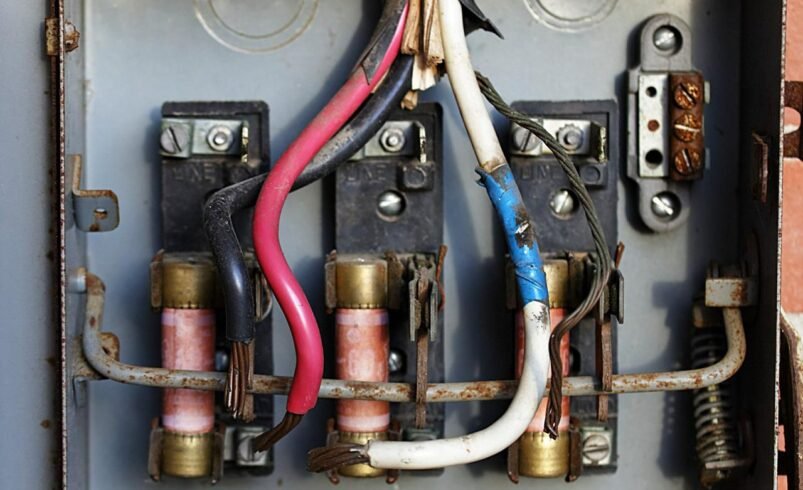Dead Short Electrical vs Ground Fault: Key Differences Explained

Understanding the electrical system in your home can feel complicated, but knowing the basics is crucial for safety. Two common issues you might hear about are a dead short electrical fault and a ground fault. While both can be dangerous, they happen for different reasons. This guide will break down what each of these faults means, how to spot them, and what you can do to keep your home safe. By the end, you’ll have a clearer picture of these electrical problems and know when to call in the professionals.
What Is a Dead Short?
A dead short electrical fault, often just called a short circuit, is one of the most direct and dangerous types of electrical faults. It occurs when a “hot” or live wire comes into direct contact with a neutral wire. This contact creates a low-resistance path for electricity to flow, causing a sudden and massive surge of current.
Causes and Signs of a Dead Short
A dead short can be caused by several issues, including:
- Damaged Insulation: Wires with old, frayed, or chewed-through insulation can easily touch.
- Loose Connections: A poorly secured wire in an outlet or switch can come loose and make contact with another wire.
- Faulty Appliances: Internal wiring in appliances can degrade over time, leading to a short circuit.
The signs of a dead short are often dramatic and immediate:
- A loud popping or banging noise.
- Sparks or a flash of light from an outlet or appliance.
- The circuit breaker tripping instantly.
- A burning smell or visible smoke.
The primary danger of a dead short electrical fault is the immense heat it generates. This can melt wire insulation, damage appliances, and easily start a fire.
Understanding Ground Faults
A ground fault is a different type of short circuit. It happens when a hot wire comes into contact with a grounded part of the electrical system. This could be a metal electrical box, the frame of an appliance, or even a person. The electricity looks for the quickest and easiest path to the ground, and sometimes that path is not where it’s supposed to be.
Causes and Signs of a Ground Fault
Ground faults are often caused by:
- Worn Insulation: Just like with dead shorts, damaged wire insulation is a common culprit.
- Moisture: Water is an excellent conductor of electricity. If moisture gets into an outlet or appliance, it can create a path for electricity to travel to the ground. This is why ground faults are common in kitchens, bathrooms, and outdoor areas.
- Dust and Debris: An accumulation of conductive dust inside an electrical box can also create an unintended path to the ground.
Signs of a ground fault can be more subtle than a dead short:
- A circuit breaker or a Ground Fault Circuit Interrupter (GFCI) outlet tripping.
- A mild to severe electric shock when touching an appliance.
The main danger of a ground fault is the risk of electric shock. If a person provides the path to the ground, the current will flow through their body, which can be fatal.
How to Prevent Electrical Faults
Prevention is always the best approach when it comes to electrical safety. Here are a few practical tips:
- Regularly Inspect Cords: Check appliance and extension cords for any signs of wear and tear.
- Don’t Overload Outlets: Plugging too many devices into one outlet can cause overheating and damage.
- Use GFCI Outlets: Install Ground Fault Circuit Interrupter (GFCI) outlets in areas with moisture, like kitchens, bathrooms, and outdoors. These devices are designed to detect ground faults and shut off the power quickly.
- Keep Appliances Dry: Be mindful of keeping electrical devices away from water.
When to Call a Professional
Electrical work is not a DIY project. If you suspect a dead short electrical fault or any other serious issue, it’s vital to call a licensed electrician immediately. They have the training and tools to diagnose and fix the problem safely.
Sometimes, electrical issues can be related to water damage or plumbing problems. If you’re experiencing issues in areas with plumbing, like a kitchen or bathroom, it might be wise to consult a plumbing expert as well. For those in South Australia, a trusted service like a Blocked Drain Plumber in Adelaide can help identify if leaky pipes are contributing to moisture-related electrical hazards. Addressing the root cause, whether it’s faulty wiring or a hidden leak, is essential. A professional Blocked Drain Plumber in Adelaide can ensure your plumbing is secure, preventing water from creating dangerous electrical situations.
Conclusion
Understanding the difference between a dead short and a ground fault helps you recognize the signs of danger. While a tripped breaker can be a nuisance, it’s a critical safety feature that’s doing its job. By taking preventative measures and calling for professional help from an electrician or a specialist like a Blocked Drain Plumber in Adelaide when needed, you can protect your property and ensure the safety of everyone in your home.



